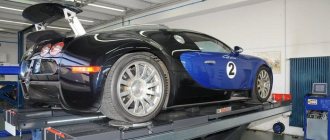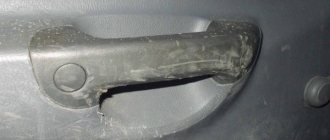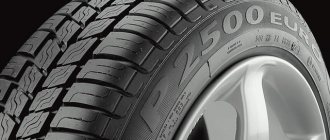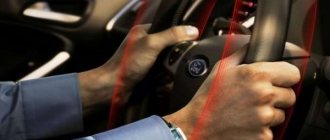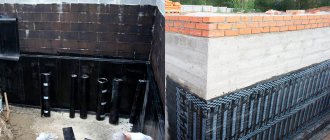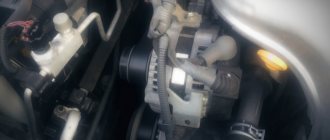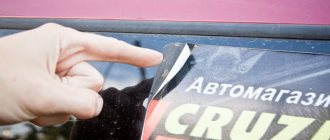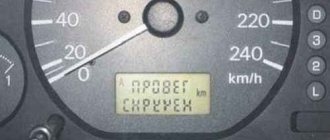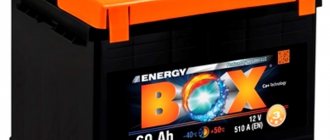What is plastidip?
RUBBER PAINT PLASTI DIP
PLASTI DIP (plastidip) is the official name of the material. It gained popularity among the people as rubber paint and liquid rubber.
This paint was developed specifically to create a protective layer on the surface. Liquid rubber is especially well and justifiably suitable for painting cars.
Plastidip is a rubberized coating, universal and quite practical, subject to strict adherence to the rules of working with it, it retains its unchanged appearance for a long time, while remaining elastic, withstands severe frosts, aggressive environmental conditions (resistant to acids and salts).
Plastidip is applied to the car in 6 layers so that the thickness of the film corresponds to its protective properties. Plastidip, essentially a matte film with a thickness of 150 to 350 microns, lays flat, if desired, it can be easily removed, and no traces remain after the film.
Salon workers who apply rubberized paint will be able to paint absolutely any part of the body and other complex areas that are difficult to paint without any difficulty.
Advantages of the method
Painting a car using this method is a matter of one day. They left the car in the morning and picked it up in the evening. Why is plastidip better than vinyl film? It can be applied to any parts and rough places on the car (badges, chrome, grilles, wheels and others).
The paint spreads evenly on the surface and forms a beautiful film of any desired shade.
Can be removed from the car body at any time without affecting the paintwork, as it does not have an adhesive base.
Despite the apparent simplicity of the work, it is better to entrust painting a car with plastidip to professionals, because all the advantages and disadvantages of this paint can only be achieved if all instructions are strictly followed.
strengths
- no complete disassembly of the car before applying the material (only door handles, bumpers, headlights and lanterns are removed)
- time frame for completing the work (covering the entire machine will take 48 hours)
- Plasti Dip coating thickness 300 microns
- possibility of application to any curved surfaces, including those that cannot be covered with film (wheels, radiator grille, badges, interior parts)
- the ability to select almost any color, including metallics, pearls, chameleon!
- ease of dismantling (Leaves absolutely no marks on the paintwork)
- the material applied to the car body by spraying, when dried, turns into a 300 micron rubber film, protecting the body from environmental influences
Plastidip is excellent for creating a protective layer of car paint due to its high strength, resistance to temperature changes or moisture, as well as the effects of acids and alkalis. Coating with liquid rubber will protect the car from scratches and other damage due to a stable, durable layer that can be easily removed if necessary. Painting with liquid rubber will only be a good way to prevent rapid wear and tear of your car.
Benefits of Plasti Dip
- protection of paintwork from scratches
- original and beautiful look of the car
- car metal corrosion protection
- renewal of plastic parts
- long period of operation
- when removed it will not leave marks on the car
Benefits of Plastidip
- Plastidip is applied by spraying without completely disassembling the car.
- Plastidip does not require body preparation and ideal paintwork condition. Can be applied to overpainted and damaged machine parts. No need to sand
- No need to prime
- Can be applied to any surface (chrome, smooth and soft plastic, varnish, enamel, wood, rubber, stone, glass)
- Dries in 30 minutes. up to 1 hour.
- The damaged layer of plasti dip is painted over with a new layer of plasti dip (enters into complete adhesion, forming a homogeneous layer)
PLATE DIP IN COMPARISON:
- As an alternative to car painting
- Less cost of work and materials.
- Paint the car and then return to the previous color.
- Applying Plasti Dip is easier, faster and cheaper than any other material since there is no need for primer, varnish and work to prepare for painting and applying primer.
- As an alternative to film (vinyl)
- Does not leave marks on any surface after removal, unlike auto film
- Forms a dense, durable layer after painting corners and complex shapes of objects
- Local repair of Plasti Dip coating by applying an additional layer of liquid rubber
If you remove the plastic dip, it will not leave any marks on any surface due to its chemical composition; it sticks to the surface without containing glue.
It is convenient to paint the inner surface, small and thin objects, and the spokes of discs with plastic dip, and at the same time it forms a homogeneous film that can be trimmed in the right place and a different color applied. When applying film to a car, this will be difficult to do.
If there is damage to the layer of the deep layer. If scratches or cuts appear, a new layer of plastic dip will easily stick to the old layer and form a single layer with it. When applying film to a car, after removal, traces of glue will remain at best. And in the worst case, the film will be removed along with the paint of your car. If the fender, hood, door, roof are damaged, you just need to apply an additional layer of plastic dip and the part will look like new.
How to apply waterproofing
Before laying the moisture-proof coating, clean the surface from dirt, remove all chips and cracks, and prime it. Before applying liquid rubber, depending on its type, moisten the floor. This is not necessary when working with polyurea.
Both materials have good adhesion, so it doesn’t matter what shape they are sprayed onto: vertical, horizontal or round.
Liquid rubber is sprayed using low pressure units. First, the components are mixed in a tank, then applied using a spray gun. This method allows you to apply the substance evenly. You can also simply pour the emulsion and spread it over the surface with a squeegee or roller. But this method will only work with a horizontal surface. It is difficult to lay liquid rubber evenly without touching the floor or roof.
The application of polyurea consists of several stages. First, you need to mix the components in a container, then use a two-component high-pressure unit and heat them up. Use a spray gun to remove it outside. It is recommended to work together: one person sprays the contents, the second monitors the level of pressure and temperature. Two people can do the job faster, and the high-pressure setting allows you to evenly cover an area of 50 square meters with polyurea in a few minutes.
Liquid rubber can be applied manually, but this method is only suitable for perfectly flat and small surfaces (5–10 square meters).
Why you should trust professionals, why not 15-20 thousand
No matter how simple it may seem to paint a car with plasti dip (liquid rubber), you still need to trust this matter to professionals and choose a company that really knows how to do it, since painting with liquid rubber has its own application technology and the lack of professional painting experience and ignorance of technological processes applying the material may give you something completely different from what you expect as a result of painting yourself. Examples from the practice of people who applied for painting, or rather repainting a car after applying plastidip on their own, painting plastidip rims from a spray can independently resulted in the presence of smudges, large shagreen, painting a car with one set of 10 liters of ready-made plastidip from a construction spray gun, spotted, unpainted surface of the body , rough in places due to dust, still with shagreen, resulting in the car being repainted again with the previous paint job removed with plastidip. Painting a radiator grille or chrome badges will not be difficult for you, but painting a car will be much more difficult, since the surface is, roughly speaking, large, without professional equipment and an experienced painter you are unlikely to be able to cover it with an even layer of dip without shagreen and the presence of dust. And lastly, for those who want to have their car painted by professionals for 15,000 - 20,000 rubles, ask first to show the car they painted for that kind of money, to make sure that you like this kind of painting, and of course, specify what kind of material they will paint it with, how many liters plastidipa will be used to paint your car and finally, what kind of guarantee awaits you for this coating after painting!!!
Plasti Dip is produced in the USA, and its analogues are made in China. We use only American Plasti Dip from Performix, an official dealer. The quality and durability of the coating depends on the quality of the material
Characteristics of polyurea and liquid rubber
To select the appropriate material, you need to know the physical and chemical properties of liquid rubber and polyurea. The two main characteristics are tensile strength and elongation. Tensile strength shows under what conditions substances begin to break down. Elongation shows the deformation at maximum load.
Tensile strength
The tensile strength of Khimtrust PM (standard) is 12 MPa, and that of liquid rubber is 0.6–0.8 MPa. According to GOST, the tensile strength of the waterproofing coating must be at least 0.6 MPa. This means that liquid rubber is easier to damage than polyurea. In addition, studies have shown that “Khimtrust PM (standard)” becomes stronger over time. Polyurea coating is better suited for warehouses, storage facilities, industrial premises, and water parks.
Relative extension
The relative elongation of polyurea “Khimtrust PM (standard)” is 450%, and the average value of liquid rubber is 700%. Polyurea is easier to deform, while liquid rubber is practically impossible to manipulate from the outside. Even if it changes its shape, it quickly returns to its original position.
Curing time
The elastomer hardens immediately after spraying, within a minute. After an hour, the surface can be fully used. Liquid rubber takes longer to cure: one to three days.
Flammability
Liquid rubber has a flammability class of G2 - it can catch fire, but this takes time. If a fire does occur, the substance begins to emit a pungent toxic odor due to the bitumen in its composition. Polyurea does not burn and does not release chemicals harmful to the human body, so it is better suited for homes and gyms.
Methods for restoring a torpedo
You can paint it with a rubber-containing compound or acrylic enamel with varnish.
Painting with a layer of varnish is considered the cheapest, although gloss can interfere with handling. Much depends on the taste and needs of the owner. The torpedo can also be painted with matte enamel, trimmed with leather or a substitute. Dashboard paint is sold in many auto stores. There is a special paint in small cans for painting the bumper. It can be used for a panel board. To renew a worn torpedo, you can use different techniques. The easiest way is to paint the instrument panel with a specially selected enamel or rubber-containing compound, and then varnish it. This method will be the most inexpensive and fastest, however, it also poses certain difficulties. For example, after painting with a glossy compound, the torpedo will become shiny, which will distract the driver on the road.
Other methods of restoring a torpedo are as follows:
- Pasting with vinyl film. There are a variety of films on sale, made in a wide range of colors - glossy, matte, leather-like, carbon, etc. You can easily choose a material that ideally matches the interior of your car. The film is applied as a single surface, without joints or seams, and has an attractive and stylish appearance. This coating will last for many years because it is durable and easy to maintain. The disadvantages of the film include the difficulty of gluing, as well as poor retention of the coating on some types of plastic.
- Covered with leather, eco-leather. Such finishing will cost an order of magnitude more, but will make the panel look luxurious. Typically, sheathing is carried out if you have some experience in such work. Otherwise, you should turn to professionals, since it is quite difficult to properly trim a torpedo with leather.
- Flocking. The technique involves applying flock to a prepared plastic surface. The material in the form of small fibers of fabric is sprayed like paint, as a result the torpedo becomes as if covered with velvet or suede. This finish lasts a long time and is very beautiful.
Flocked dashboard
Consumables for working with a torpedo you need to purchase:
- degreaser for preparing the base for painting (alcohol, acetone, white spirit or other substance that does not dissolve plastic);
- detergent for cleaning the torpedo;
- sandpaper for cleaning scratches, chips, abrasions;
- paint in a can or other form for painting a torpedo;
- primer for plastic to enhance adhesion to paint;
- varnish for finishing the torpedo (preferably two-component polyurethane);
- fine mesh for filtering paint and primer;
- putty for sealing cracks.
Instead of sandpaper, craftsmen often use a grinding machine. This device is effective if you have sufficient experience on large, level surfaces. Since the torpedo is made of soft plastic and has a complex texture, it is better for a non-professional to use regular sandpaper to avoid damaging the base. As a last resort, you can use a grinder or a drill with an attachment for processing curved surfaces.
Tools that may be required to process a torpedo are:
- brush or roller for priming;
- spray gun - manual or with a compressor for uniform application of paint;
- a set of screwdrivers with various attachments for dismantling and installing a torpedo;
- spatula for applying putty.
Liquid vinyl treatment
Liquid vinyl is a modern product that is successfully used for painting car parts. A thin layer of this coating decorates and protects many suitable surfaces well. This is a high-tech product of excellent quality. Treatment with liquid vinyl will increase the resistance of the panel to the influence of bright rays of the Sun, ice, frost or other harmful compounds. The beauty of this substance is that after prolonged use it comes off easily. And this fact does not reduce its strength qualities.
Glossary
The base is a preparatory color. Used before applying the main color.
The base color is the final color of the surface.
Base - material of the main color
Powder pigment is a bulk material whose feature is to impart certain effects to the surface
A pneumatic spray gun is part of a spray system, used in conjunction with a compressor and pressure regulator.
Electric spray gun - separate spray system
Scotch tape - masking tape. Used to separate non-paintable surfaces
Kohler is a colored paste that colors a certain material in its color.
